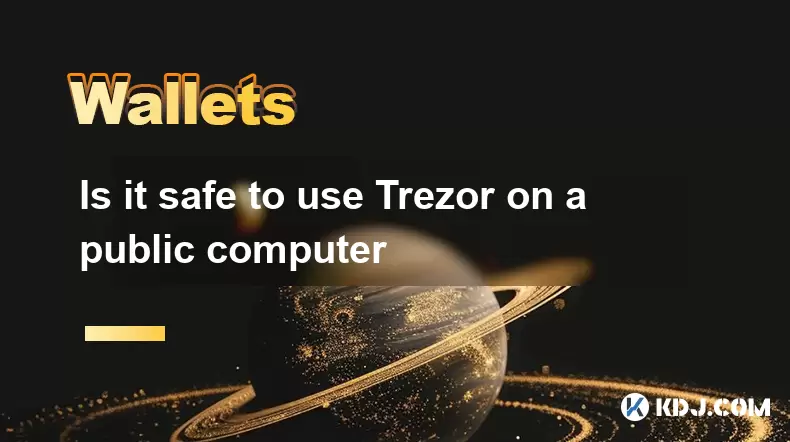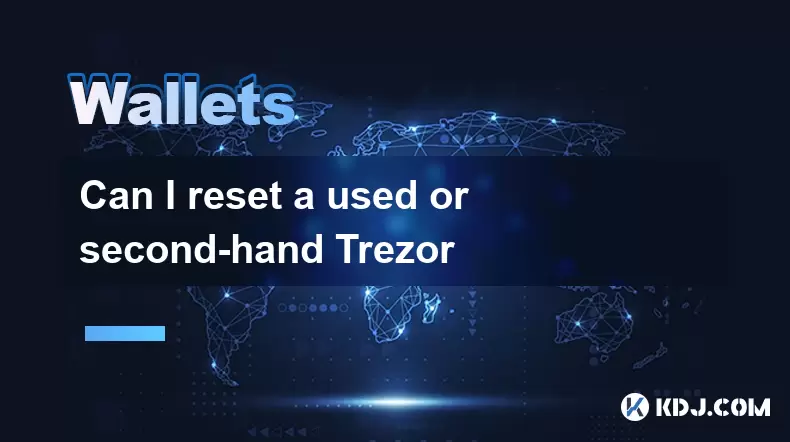-
 Bitcoin
Bitcoin $109,507.9823
0.43% -
 Ethereum
Ethereum $2,716.0274
3.79% -
 Tether USDt
Tether USDt $1.0003
-0.01% -
 XRP
XRP $2.3859
3.05% -
 BNB
BNB $665.2705
0.56% -
 Solana
Solana $154.6874
1.56% -
 USDC
USDC $1.0002
0.02% -
 TRON
TRON $0.2896
1.05% -
 Dogecoin
Dogecoin $0.1738
1.67% -
 Cardano
Cardano $0.6117
3.72% -
 Hyperliquid
Hyperliquid $40.3052
3.82% -
 Sui
Sui $2.9817
2.08% -
 Bitcoin Cash
Bitcoin Cash $505.0944
0.71% -
 Chainlink
Chainlink $14.0820
1.96% -
 Stellar
Stellar $0.2902
12.90% -
 UNUS SED LEO
UNUS SED LEO $9.0423
-0.34% -
 Avalanche
Avalanche $18.7084
1.54% -
 Hedera
Hedera $0.1714
6.33% -
 Shiba Inu
Shiba Inu $0.0...01218
2.48% -
 Toncoin
Toncoin $2.8261
1.24% -
 Litecoin
Litecoin $88.8228
1.59% -
 Monero
Monero $319.1344
2.71% -
 Polkadot
Polkadot $3.5479
2.69% -
 Dai
Dai $1.0001
0.00% -
 Ethena USDe
Ethena USDe $1.0010
0.06% -
 Uniswap
Uniswap $8.2690
6.49% -
 Bitget Token
Bitget Token $4.3622
1.19% -
 Aave
Aave $298.5989
2.11% -
 Pepe
Pepe $0.0...01042
1.97% -
 Pi
Pi $0.4663
1.15%
How to connect Trezor to Rabby wallet
Connect your Trezor hardware wallet to Rabby Wallet for secure dApp interactions and transaction signing.
Jul 09, 2025 at 05:49 am

What Is Trezor and Rabby Wallet?
Trezor is a hardware wallet developed by SatoshiLabs that allows users to securely store their cryptocurrency assets offline. It supports a wide range of cryptocurrencies, including Bitcoin, Ethereum, and various ERC-20 tokens. Rabby Wallet, on the other hand, is a non-custodial wallet primarily used for interacting with decentralized applications (dApps) on the Ethereum blockchain and its compatible networks.
Connecting Trezor to Rabby Wallet enables users to interact with dApps while keeping their private keys stored securely on the Trezor device. This setup ensures enhanced security without compromising usability in the DeFi or Web3 space.
Prerequisites Before Connecting
Before attempting to connect your Trezor to Rabby Wallet, ensure you have the following:
- A Trezor Model One or Trezor T hardware wallet.
- The latest firmware installed on your Trezor device via Trezor Suite.
- The Rabby Wallet browser extension installed on Chrome or any Chromium-based browser.
- A computer with an internet connection and USB port available.
- Ensure Trezor Bridge is installed if using Trezor Model One.
It’s important to verify that both Trezor and Rabby Wallet are updated to the latest versions to avoid compatibility issues or unexpected errors during the connection process.
Step-by-Step Guide to Connect Trezor to Rabby Wallet
To establish a secure connection between Trezor and Rabby Wallet, follow these steps carefully:
- Open the Rabby Wallet extension from your browser toolbar.
- If you're not already logged in, enter your password to unlock Rabby Wallet.
- Navigate to the "Wallets" section within Rabby Wallet's interface.
- Click on the "+" button to add a new wallet.
- From the list of supported wallets, select "Trezor / Ledger".
- Choose "Trezor" as your hardware wallet option.
- Connect your Trezor device to your computer using the provided USB cable.
- Unlock your Trezor device by entering your PIN code.
- Confirm on the Trezor screen when prompted with the message “Connect wallet?”
- Rabby Wallet will now detect your Trezor account(s).
- Select the Ethereum account (or other EVM-compatible chain accounts) you wish to link.
- Confirm the import on your Trezor screen when prompted with “Export public key?”
- Once confirmed, the selected account will appear under your Rabby Wallet interface.
At this point, your Trezor is successfully connected to Rabby Wallet, allowing you to sign transactions and interact with dApps securely.
Interacting with dApps Using Trezor via Rabby Wallet
Once connected, using your Trezor through Rabby Wallet for dApp interactions becomes straightforward:
- Visit a decentralized application (e.g., Uniswap, SushiSwap, or Aave) in your browser.
- Click the "Connect Wallet" button typically located at the top right corner of the dApp interface.
- In the wallet selection modal, choose "Rabby Wallet".
- Rabby Wallet will prompt you to confirm the connection to the dApp.
- After confirming, your Trezor-linked account will be shown as connected.
- Perform actions such as swapping tokens, staking, or lending as needed.
- When signing a transaction, Rabby Wallet will forward the request to your Trezor device.
- Review the transaction details on your Trezor screen and approve it using the physical buttons.
This workflow ensures that all transaction approvals happen directly on the Trezor hardware, maintaining the highest level of security.
Troubleshooting Common Connection Issues
Despite following the correct procedure, some users may face issues connecting Trezor to Rabby Wallet. Here are some common problems and solutions:
- Device Not Recognized: Ensure Trezor Bridge is running and up to date. Restart the Trezor Bridge service if necessary.
- Firmware Update Required: Check for updates using Trezor Suite and update your Trezor firmware before proceeding.
- Browser Extension Not Responding: Try reinstalling the Rabby Wallet extension or use an incognito window with no other extensions enabled.
- Wrong Network Selected: Make sure Rabby Wallet is set to the correct network (Ethereum Mainnet or compatible chains).
- PIN Entry Errors: If you've entered the wrong PIN multiple times, your Trezor may lock you out temporarily or require recovery. Always double-check your PIN entry.
- Transaction Signing Failures: Ensure your Trezor screen displays the exact transaction details you expect. If there's a mismatch, do not approve the transaction.
If none of these troubleshooting steps resolve the issue, consider reaching out to Trezor support or Rabby Wallet support for further assistance.
Frequently Asked Questions
Q: Can I use multiple Trezor accounts with Rabby Wallet?
A: Yes, Rabby Wallet allows you to import and manage multiple accounts from the same Trezor device or different devices.
Q: Is it safe to connect Trezor to Rabby Wallet?
A: Yes, Rabby Wallet does not store your private keys. All transaction approvals occur directly on the Trezor hardware, ensuring maximum security.
Q: Do I need to keep my Trezor plugged in after connecting it to Rabby Wallet?
A: Yes, you must keep your Trezor connected whenever you need to sign transactions through Rabby Wallet. Disconnecting it will prevent transaction approval until reconnected.
Q: Can I disconnect my Trezor from Rabby Wallet without removing the account?
A: Yes, you can disconnect the session temporarily from the Rabby Wallet interface without deleting the account. To reconnect later, simply plug in your Trezor and re-establish the connection.
Disclaimer:info@kdj.com
The information provided is not trading advice. kdj.com does not assume any responsibility for any investments made based on the information provided in this article. Cryptocurrencies are highly volatile and it is highly recommended that you invest with caution after thorough research!
If you believe that the content used on this website infringes your copyright, please contact us immediately (info@kdj.com) and we will delete it promptly.
- BlockDAG Leads the Crypto Pack: A 2025 Outlook on BlockDAG, Cardano, Litecoin, and Polkadot
- 2025-07-10 10:50:12
- ONDO Price Watch: Traders Eye Key Resistance for Potential $3 Target
- 2025-07-10 10:50:12
- Bitcoin vs. the Brazilian Real: Navigating Volatility in a Tariff War
- 2025-07-10 11:10:12
- VC Firms, Bitcoin, and Funding: A New York Minute on the Future of Crypto
- 2025-07-10 11:10:12
- Cronos (CRO) Jumps 16% on ETF Buzz: A NYC Take
- 2025-07-10 11:15:12
- Binance, Treasury, and IPOs: Navigating the Crypto Landscape in 2025
- 2025-07-10 11:30:12
Related knowledge

How to find a specific receiving address on my Trezor
Jul 09,2025 at 10:36pm
Understanding the Purpose of a Receiving AddressA receiving address is a unique identifier used in blockchain networks to receive cryptocurrency. Each...

How to connect Trezor to Rabby wallet
Jul 09,2025 at 05:49am
What Is Trezor and Rabby Wallet?Trezor is a hardware wallet developed by SatoshiLabs that allows users to securely store their cryptocurrency assets o...

Is it safe to use Trezor on a public computer
Jul 09,2025 at 08:56pm
Understanding the Risks of Using Trezor on a Public ComputerUsing a Trezor hardware wallet is generally considered one of the most secure methods for ...

What happens if I forget my Trezor passphrase
Jul 09,2025 at 03:15am
Understanding the Role of a Trezor PassphraseIf you use a Trezor hardware wallet, you may have set up a passphrase as an extra layer of security beyon...

How to stake Polkadot (DOT) with Trezor
Jul 09,2025 at 09:42pm
Understanding Polkadot (DOT) StakingStaking Polkadot (DOT) allows users to participate in network validation and earn rewards. Unlike traditional proo...

Can I reset a used or second-hand Trezor
Jul 09,2025 at 11:49am
Understanding the Reset Process for a Used or Second-Hand TrezorIf you have acquired a used or second-hand Trezor wallet, one of the first things you ...

How to find a specific receiving address on my Trezor
Jul 09,2025 at 10:36pm
Understanding the Purpose of a Receiving AddressA receiving address is a unique identifier used in blockchain networks to receive cryptocurrency. Each...

How to connect Trezor to Rabby wallet
Jul 09,2025 at 05:49am
What Is Trezor and Rabby Wallet?Trezor is a hardware wallet developed by SatoshiLabs that allows users to securely store their cryptocurrency assets o...

Is it safe to use Trezor on a public computer
Jul 09,2025 at 08:56pm
Understanding the Risks of Using Trezor on a Public ComputerUsing a Trezor hardware wallet is generally considered one of the most secure methods for ...

What happens if I forget my Trezor passphrase
Jul 09,2025 at 03:15am
Understanding the Role of a Trezor PassphraseIf you use a Trezor hardware wallet, you may have set up a passphrase as an extra layer of security beyon...

How to stake Polkadot (DOT) with Trezor
Jul 09,2025 at 09:42pm
Understanding Polkadot (DOT) StakingStaking Polkadot (DOT) allows users to participate in network validation and earn rewards. Unlike traditional proo...

Can I reset a used or second-hand Trezor
Jul 09,2025 at 11:49am
Understanding the Reset Process for a Used or Second-Hand TrezorIf you have acquired a used or second-hand Trezor wallet, one of the first things you ...
See all articles

























































































